What to do in March
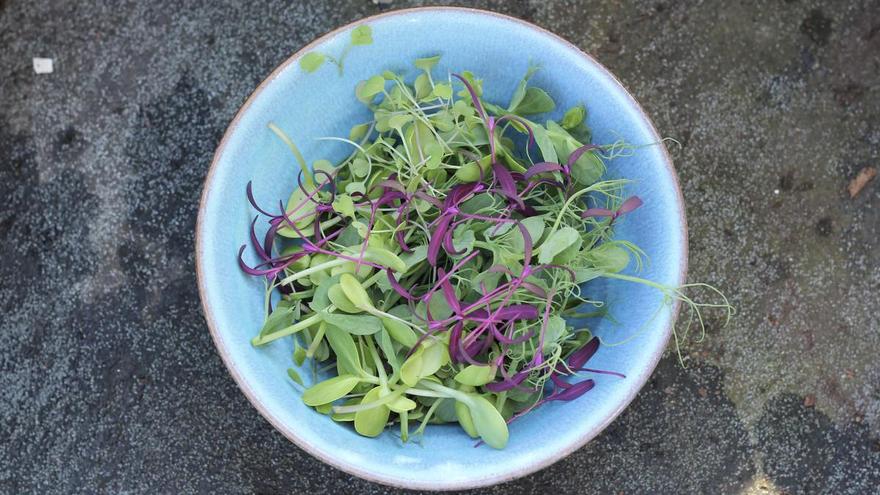
March is an exciting month in the container garden. The longer, hopefully warmer, days stimulate plant growth, it is still light after 5pm (hurrah!), and we can start sowing more seeds.
However, if you feel less experienced or confident in growing, please don't feel pressured to start sowing yet - everything gets easier to grow later in the spring :)
The timings and advice here are based on container gardening at home in the UK. They are also relevant for growing in other parts of the Northern Hemisphere, although sowing times can vary by up to a few weeks. Look out for a seed sowing calendar for your area and use it in conjunction with the advice here.
This month
-
What to sow outside: including salad greens, parsley, coriander, peas, and spinach.
-
What to sow inside: chillies, peppers, aubergines / eggplant and tomatoes.
-
Be slug and snail vigilant!
-
What to harvest
-
FAQs: Do I have to sow seeds now? What potato varieties to grow in containers. What is ‘hardening off’.
1. What to sow outside
The benefit of starting some plants outside this month is the potential for early pickings. But sowing now also comes with the risk that an unexpected frost will slow growth or even kill some. For a safer option, most outdoor sowings can wait until April when they will also grow faster. However, if you have plenty of seeds and don’t mind the odd setback, sowing now will help you get ahead.
If indoor space permits, most seeds - even those of hardy vegetables - will germinate quicker and more reliably if sown inside and then moved outside when they come up. This is because seeds germinate better in warm, consistent temperatures, and more reluctantly in the day / night fluctuations outside. Sow the seeds in trays, modules or small pots.
Most seeds don’t need light to germinate (except lettuce, mustards, and parsley). So, to save space, you can pile the trays on top of each other until they germinate. Keep a close eye on them and move them into light as soon as they come up.
Once germinated, avoid moving baby seedlings outside on a cold or windy day. The dramatic change of temperature will be a shock and can sometimes stall the growth of even hardy plants. Choose a warmer day and, if possible, try to acclimatise them to outdoor conditions slowly, bringing them in at night for the first few days (see ‘hardening off’ under FAQs below).
The following can be sown and grown outside this month in many areas (check what other gardeners in your area are sowing now, too) and will survive light frosts:-
- Hardy salad leaves, including: mustards, rocket / arugula, sorrel, watercress, land cress, orach and lettuce - perfect for early spring salads!
- Spring onions / scallions.
- Parsley and coriander.
- Peas and broad beans / fava beans. (Broad beans are not very productive in containers but they produce beans early in the summer, freeing up the pot for a courgette / zucchini or similar.)
- Swiss chard and leaf beat (NB this one often stalls in a cold snap so I delay sowing it until April here in the North East of England)
- Kale and spinach.
- Carrots.
- Beetroot.
- Potatoes, from the end of March until end of April. If started this month, cover them with a cloche or horticultural fleece if frost is predicted (the growing tips are tender).
- Jerusalem artichokes - these are large plants but they grow surprisingly well in a container.
Tip: when raising seeds or seedlings outside early in the year, the transparent propagator lids sold for seed trays are useful for keeping cold winds out (you can secure the lid with masking tape in strong winds). Remove the lid on sunny days though - or it can get too hot inside. Another option is to buy (or DIY) a mini greenhouse. Just beware that the cheap models are usually poor quality plastic and prone to rip or blow away - read the discussion from experienced users on my Facebook Page here.
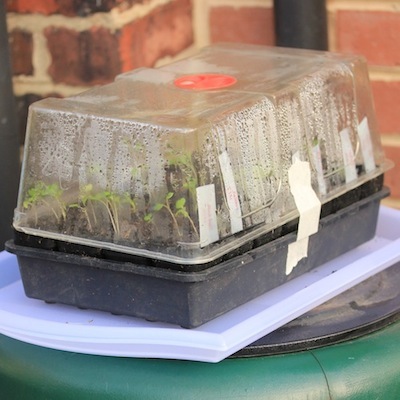 Seedlings getting a boost of outdoor light. The lid keeps out the cold wind, and the masking tape prevents it blowing off.
Seedlings getting a boost of outdoor light. The lid keeps out the cold wind, and the masking tape prevents it blowing off.
2. What to sow inside
Some tender vegetables (those sensitive to frost), including chillies and aubergines / eggplant, need to be sown inside this month so that they are producing fruit by mid summer. They are kept inside until all risk of frost is passed (usually between late April and early June, depending on your area) and then moved outside. Bear in mind how much indoor space they will eventually take up before you sow too many. Ten baby tomato seedlings might fit snugly into an egg box but will crowd out several window sills eight weeks later!
A common challenge of growing at home is that our ‘bright’ windows often aren’t actually that bright - at least compared to a greenhouse. To grow strong and sturdy, seedlings need lots of light. So put them in the brightest place you can find. Also, bear in mind that the warmer a room is, the more light seedlings need for strong growth - so sometimes a cooler room is better. If you find your seedlings are growing weak or straggly, an LED grow light can sometimes help.

The following seeds can be sown inside this month
-
Peppers and Chillies - sow early in March if possible, unless you have an early ripening variety like Early Jalapeno, which can be sown up to the first week of April.
-
Aubergines - sow in late February or first half of March.
-
Tomatoes and tomatilloes - sow inside in late March or early April. Because tomatoes grow so quickly, a space saving option is to sow a couple now for early pickings - and the rest in April.
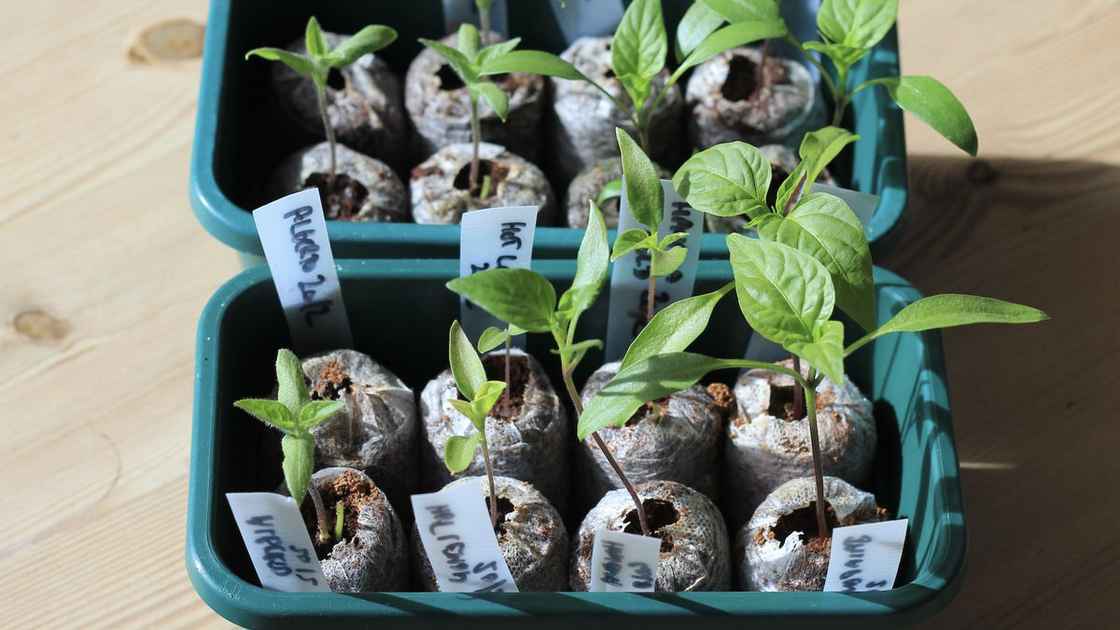
3. Slugs: be vigilant!
Slugs and snails are an important part of our ecosystem and we can happily grow alongside them, particularly once our plants are fully grown. But, at this time of year, they can decimate baby seedlings… sometimes in just one evening. So we need to be vigilant until our plants are well established.
Note: not all slugs eat living plant material. Some species, like the Green Cellar Slug, eat mainly mould and algae. Try to identify them before removing. You can find a visual slug identification guide on the John Innes website here, and a more detailed, downloadable guide, by searching for: “Brian Eversham Identifying british slugs”.
It’s a sad fact that most balconies and patios are low on slug predators like hedgehogs, ducks, and ground beetles. Therefore, most often, you need to be the ‘predator’. Your goal is not to eliminate slugs, but to keep the number down early in the season so that your plants can establish. If slug numbers get out of control at this time growing becomes both difficult and demoralising.
What’s the best way to control slugs? There are lots of products you can buy - and everyone has a clever trick - but in my experience, the only sure way is to collect them up. Look under pots and other hiding areas before you put seedlings outside. Tour your containers once a week after dark (when slugs are most often out and about), armed with a torch, and pick them off. Move the slugs to a local green space (a large patch of grass the other side of the road is handy for me), feed to the birds, recycle in a worm bin, or give to a friend who has chickens.
(Just in case you are wondering, the most humane way to kill slugs is to collect them in an old jar or yoghurt pot and put them in the freezer for 24 hours. They will go to sleep before they die. Or to crush them quickly with a stone or boot. Less humane options include drowning in beer or cutting with scissors).
4. What to harvest this month
- Salads. If you sowed winter salads in August / September last year, you will notice faster and stronger growth again as the day lengthen. Homegrown salad leaves taste particularly good at this time, a welcome change from supermarket fare.
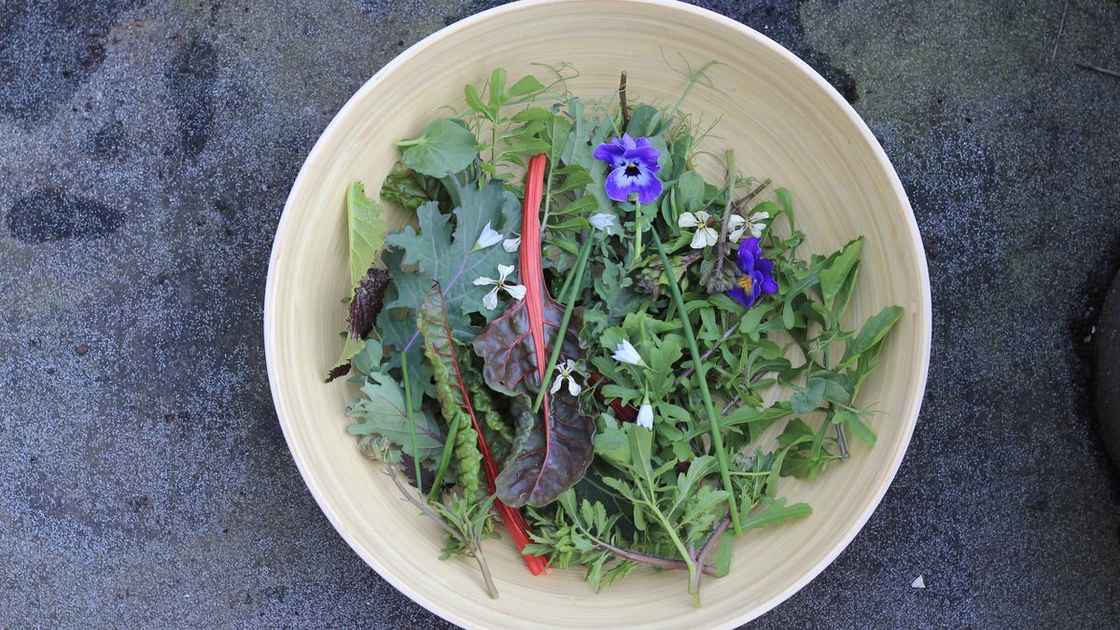
-
Kale, chard and spinach. Established plants will grow strongly this month, too - and excellent harvests are often possible later in the month.
-
Jerusalem artichokes. Harvest any remaining tubers early in the month before they sprout again.
-
Herbs. Bay, thyme, rosemary, sage and other evergreen herbs can continue to be harvested sparingly this month.
-
The first rhubarb is often ready to harvest at the end of this month.
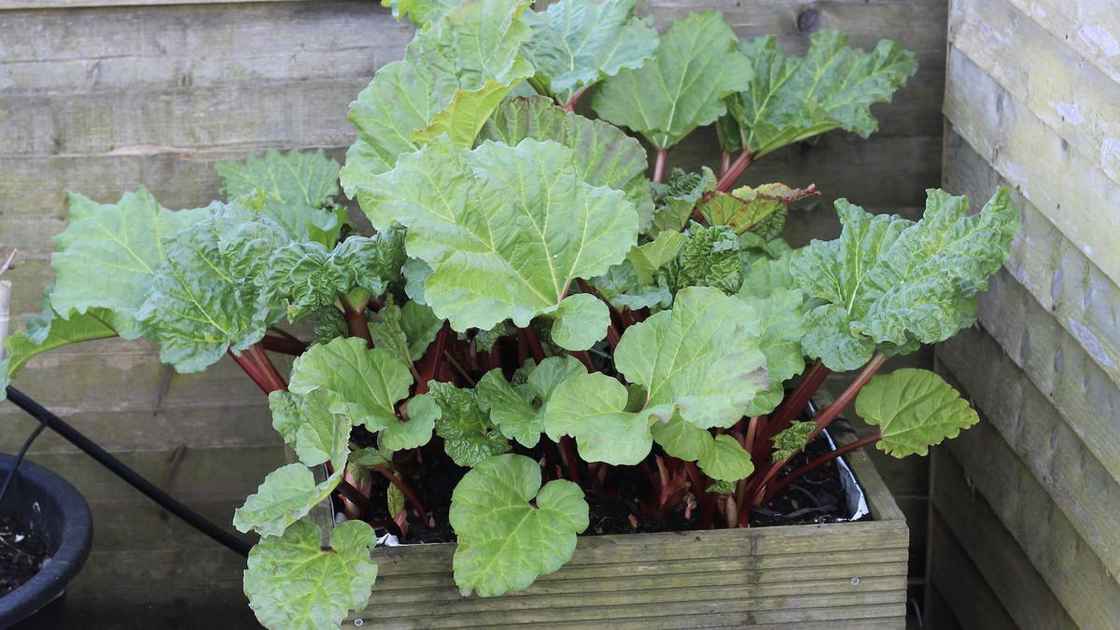
5. A few FAQs
Do I have to start sowing seeds now?
No. You can happily wait until April or May. Seeds will be more willing to grow then and you'll still have plenty of time to grow a wide variety of edible plants. (Chillies and aubergines can always be bought as plants later in the year. ) It's a lot easier to grow from seed later in the year so this is a good option for less experienced or confident gardeners. If you decide to sow now, do so with an open mind and don’t be hard on yourself. if it doesn’t work out.
What potato varieties are best in containers?
'First early' and 'Second early', are the fastest growing potato varieties (ready by June if planted in March) and are a good choice for containers. You get the flavour of new potatoes, and, because you can harvest them in June or early July, you can then grow something else in the same pot - like courgettes/ zucchini and French / string beans - over the summer. Main crop potatoes are slower to grow, need larger containers, and produce higher yields later in the year.
What is hardening off and why is it important?
Hardening off is the term for acclimatising plants that are started inside to the colder temperatures and more turbulent air currents outside. It’s most needed when there is a large difference between indoor and outdoor temperatures - as this difference can shock plants and ‘check’ their growth. Hardening off becomes less critical as the temperature warms up or in longer warmer spells.
In general, though, I recommend it - in part because plants need to adjust to the wind outside as well as the temperature change.
To harden off plants, simply put them outside on warmer days, and bring them it again at night. If you keep your plants on a couple of trays or in old crates, this only takes a minute or two.
Avoid putting plants out on windy days unless you can give them protection. Some plants, particularly cucumbers, courgettes / zucchini and French / string beans, hate the wind, and will quickly wilt until they become acclimatised to it.
Another significant side benefit of hardening off is that seedlings get a healthy dose of outdoor light, which helps them grow strong and sturdy.
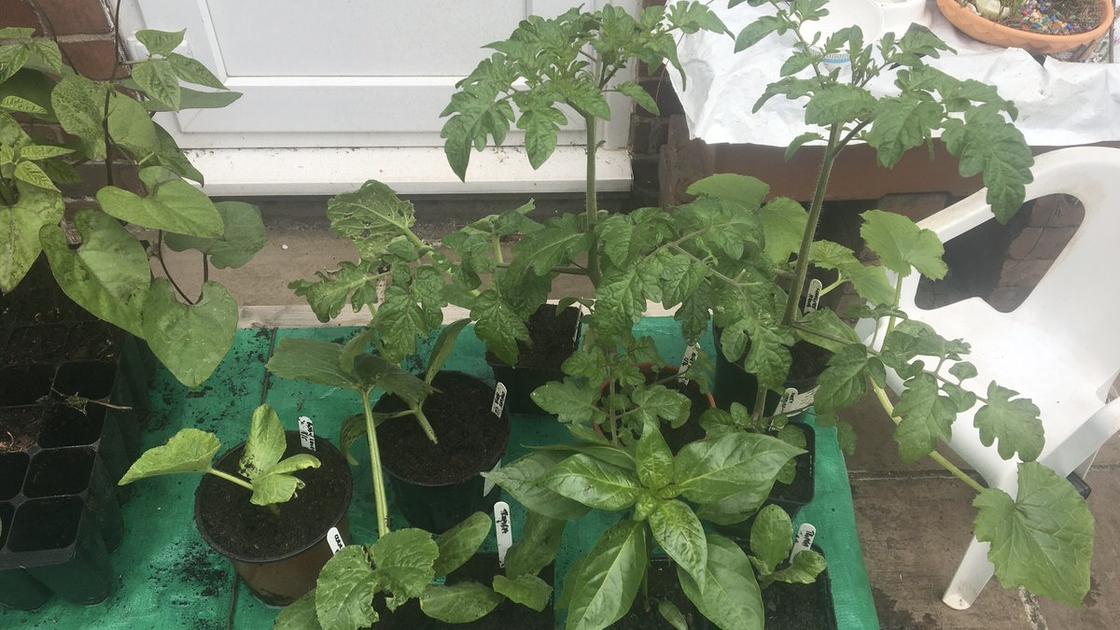
Your turn
What are you doing this month in your container garden? I'd love to hear in the comments.

51 comments
Hi Mark, you’ve inspired me again! I’ve moved to a flat which doesn’t have a south/ west facing window so I had given up on seed sowing, until I saw your list of seeds to grow outside. Hooray! Thank you
Oh, so glad Sally, happy sowing!
Hello, Thanks for the tips. Love your newsletter. I currently have some peas, sage, onions and lettuce outside in pots. A couple peppers inside. Lots of onions in the ground outside. Waiting another week to sow/plant more herbs & lettuces. LH
Excellent Linda, you are well ahead of me :).
Last year I grew potatoes in pots on the patio, they took a long time to be ready but had a reasonable harvest in August. Just bought a mini greenhouse from a local garden centre and planted salad leaves, cherry tomatoes cucumber peppers and spring onions yesterday. I'm still experimenting. Herbs are the most successful part of the container garden. Chives are already growing well. Thanks for the book and all your tips. AH
Moving a big folding table table into my 10ftx15 ft mini polytunnel to use as a sowing table for veg now..which grows enouugh veg for two just fine. We also have a properly netted 8ft x 15ft for brassicas and anything that needs nastys keeping out., as well as enough space for potatoes,and lots of soft fruit. Will try asparagus in a new bed. The one adjcent to the big privet hedge is struggling.
Leave a comment